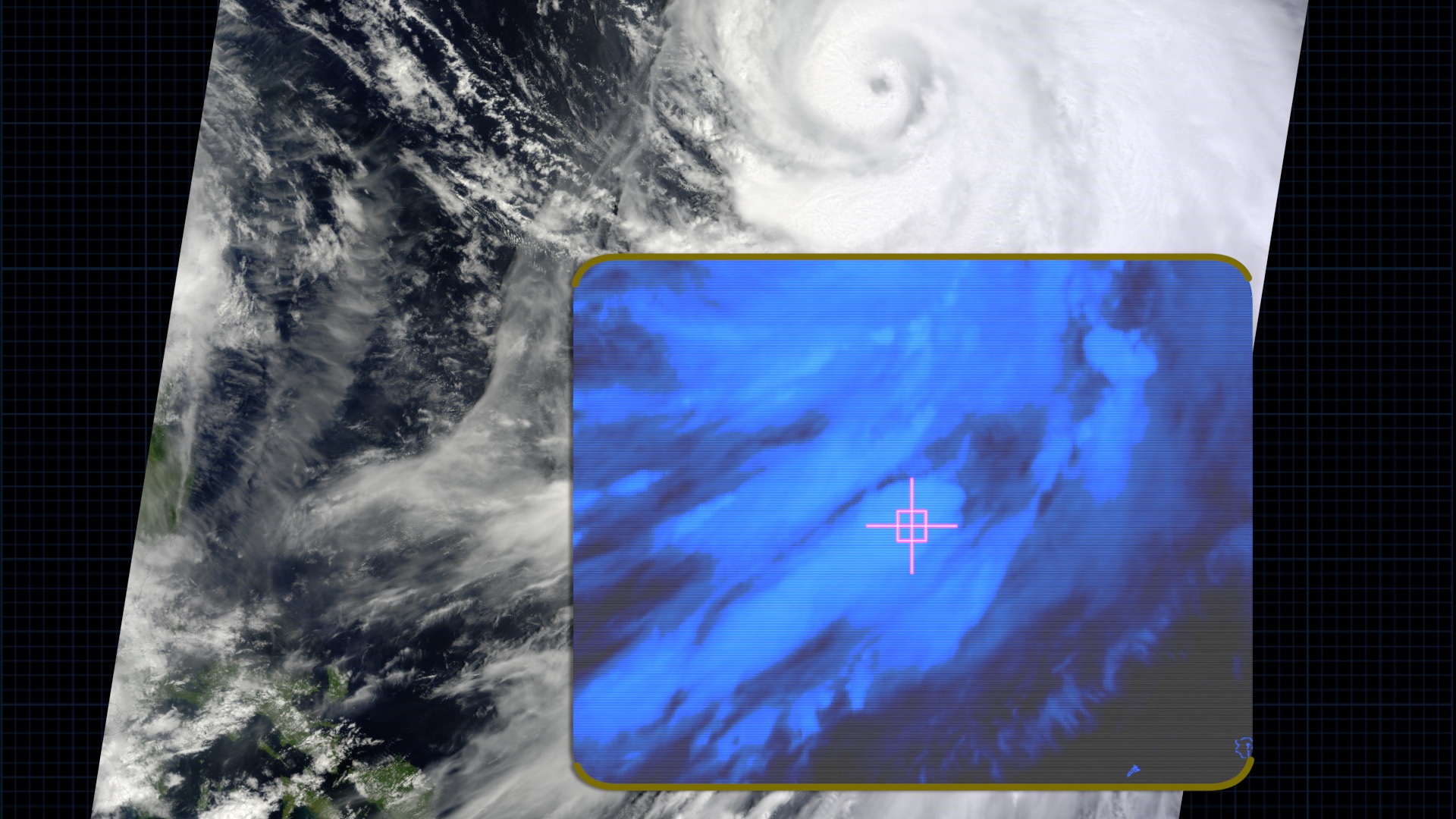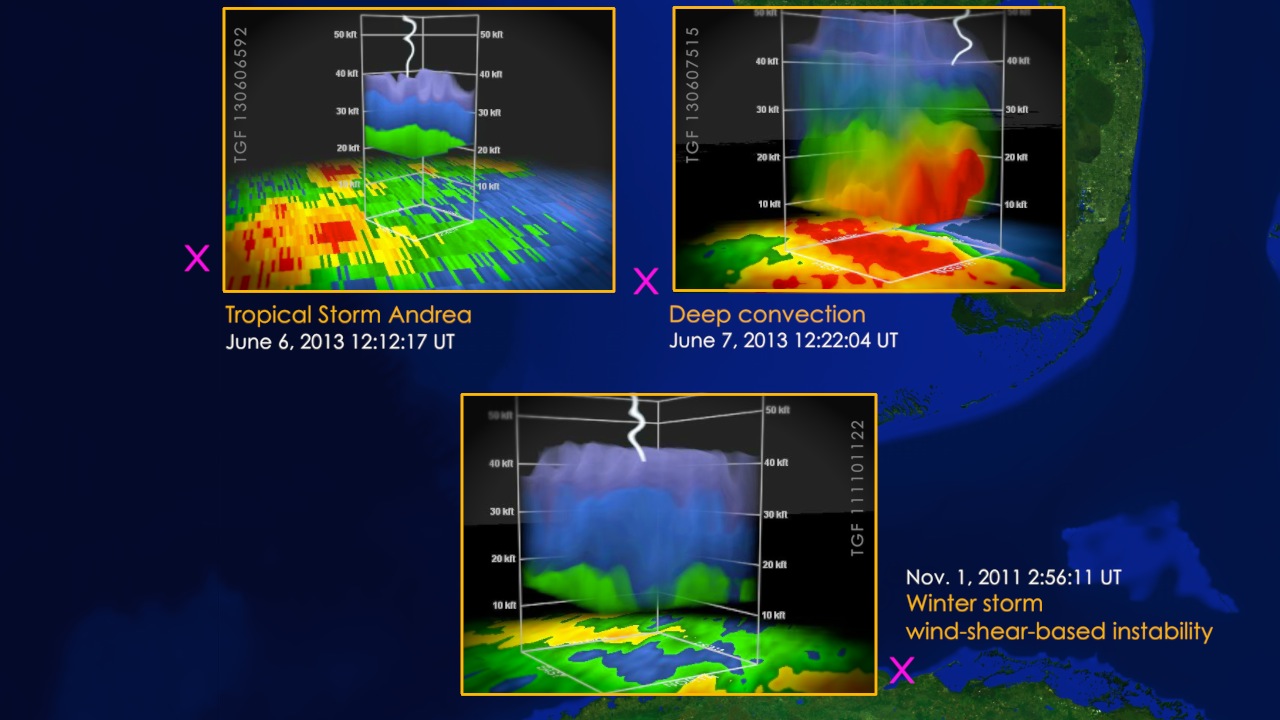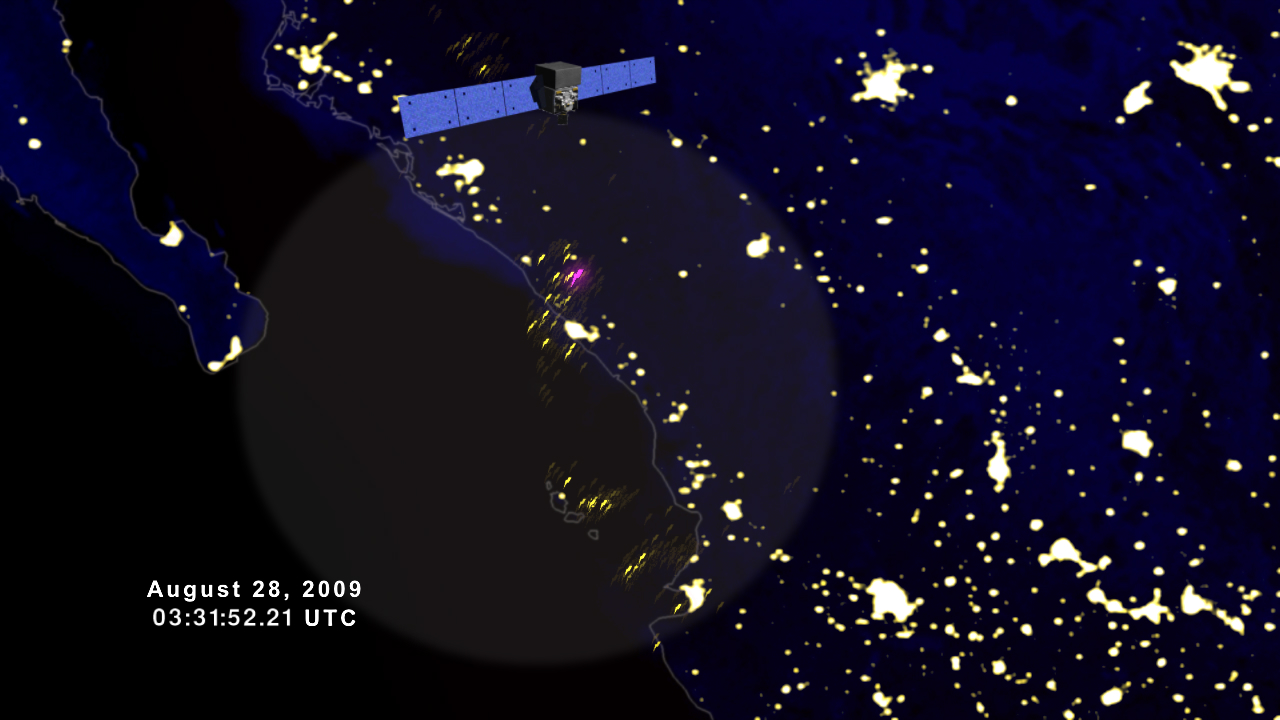Terrestrial Gamma-ray Flashes Create Antimatter
NASA's Fermi Gamma-ray Space Telescope has detected beams of antimatter launched by thunderstorms. Acting like enormous particle accelerators, the storms can emit gamma-ray flashes, called TGFs, and high-energy electrons and positrons. Scientists now think that most TGFs produce particle beams and antimatter.
For additional animations showing bremsstrahlung and pair production gamma ray reactions, go here.
For more visualizations showing Fermi's TGF detections, go to#3747, #3748, and #3756.
For animations of the Fermi spacecraft and matter/antimatter, go to#10707 and #10651.
TGFs produce high-energy electrons and positrons. Moving near the speed of light, these particles travel into space along Earth's magnetic field.
Watch this video on the NASAexplorer YouTube channel.
For complete transcript, click here.
Interactions with matter can produce gamma rays and vice versa. So-called "bremsstrahlung" gamma rays result when high-energy electrons traveling close to the speed of light become deflected by passing near an atom or molecule. In pair production, a gamma ray passing through the electron shell of an atom transforms into two particles: an electron and its antimatter opposite, a positron.
Animated diagram showing the behavior and composition of TGF emissions.
Credit: NASA/Goddard Space Flight Center/J. Dwyer/Florida Inst. of Technology
A TGF produces gamma rays (magenta) as well as high-energy electrons (yellow) and positrons (green). This simulation tracks a TGF and its particle beams from their origin altitude of 9.3 miles (15 km) to 373 miles (600 km), beyond Fermi's orbit.
Credit: Joe Dwyer/Florida Inst. of Technology

Sidebar: How thunderstorms launch particle beams into space

On Dec. 14, 2009, while NASA's Fermi flew over Egypt, the spacecraft intercepted a particle beam from a terrestrial gamma-ray flash (TGF) that occurred over its horizon. Fermi's Gamma-ray Burst Monitor detected the signal of positrons annihilating on the spacecraft — not once, but twice. After passing Fermi, some of the particles reflected off of a magnetic "mirror" point and returned.

On Dec. 14, 2009, while NASA's Fermi flew over Egypt, the spacecraft intercepted a particle beam from a terrestrial gamma-ray flash (TGF) that occurred over its horizon. Fermi's Gamma-ray Burst Monitor detected the signal of positrons annihilating on the spacecraft — not once, but twice. After passing Fermi, some of the particles reflected off of a magnetic "mirror" point and returned. No Labels.

Fermi's position relative to the TGF it detected.

Artist interpretation of the cloud of electrons and positrons passing through the Fermi satellite and causing it to emit gamma rays.

Artist interpretation of electrons accelerating upwards from a thunderhead.

Map of all terrestrial gamma-ray flashes detected by Fermi's Gamma-ray Burst Monitor through the end of 2010.
For animated version, go here,

This image from the Meteosat 9 weather satellite was taken on Dec. 14, 2009, about 7 minutes after Fermi detected positrons from a TGF. No storms are present over Egypt, where Fermi was located at the time of the event, but thunderstorms are plentiful over Zambia.
Credit: SSEC/Univ. of Wisconsin, Madison
For More Information
Credits
Please give credit for this item to:
NASA/Goddard Space Flight Center. However, each image should be credited as indicated above.
-
Animators
- Walt Feimer (HTSI)
- Scott Wiessinger (UMBC)
- Joseph Dwyer (FIT)
- Chris Meaney (HTSI)
-
Video editor
- Scott Wiessinger (UMBC)
-
Narrator
- Karen Fox (ADNET Systems, Inc.)
-
Producer
- Scott Wiessinger (UMBC)
-
Science writer
- Francis Reddy (University of Maryland College Park)
-
Writer
- Scott Wiessinger (UMBC)
-
Graphics
- Francis Reddy (University of Maryland College Park)
-
Visualizers
- Francis Reddy (University of Maryland College Park)
- Tom Bridgman (Global Science and Technology, Inc.)
Release date
This page was originally published on Monday, January 10, 2011.
This page was last updated on Wednesday, May 3, 2023 at 1:53 PM EDT.
Missions
This visualization is related to the following missions:Series
This visualization can be found in the following series:Tapes
This visualization originally appeared on the following tapes:-
Fermi TGF Antimatter
(ID: 2010083)
Thursday, July 15, 2010 at 4:00AM
Produced by - Robert Crippen (NASA)
Papers used in this visualization
Datasets used in this visualization
-
[Fermi]
ID: 687
Note: While we identify the data sets used in these visualizations, we do not store any further details, nor the data sets themselves on our site.


